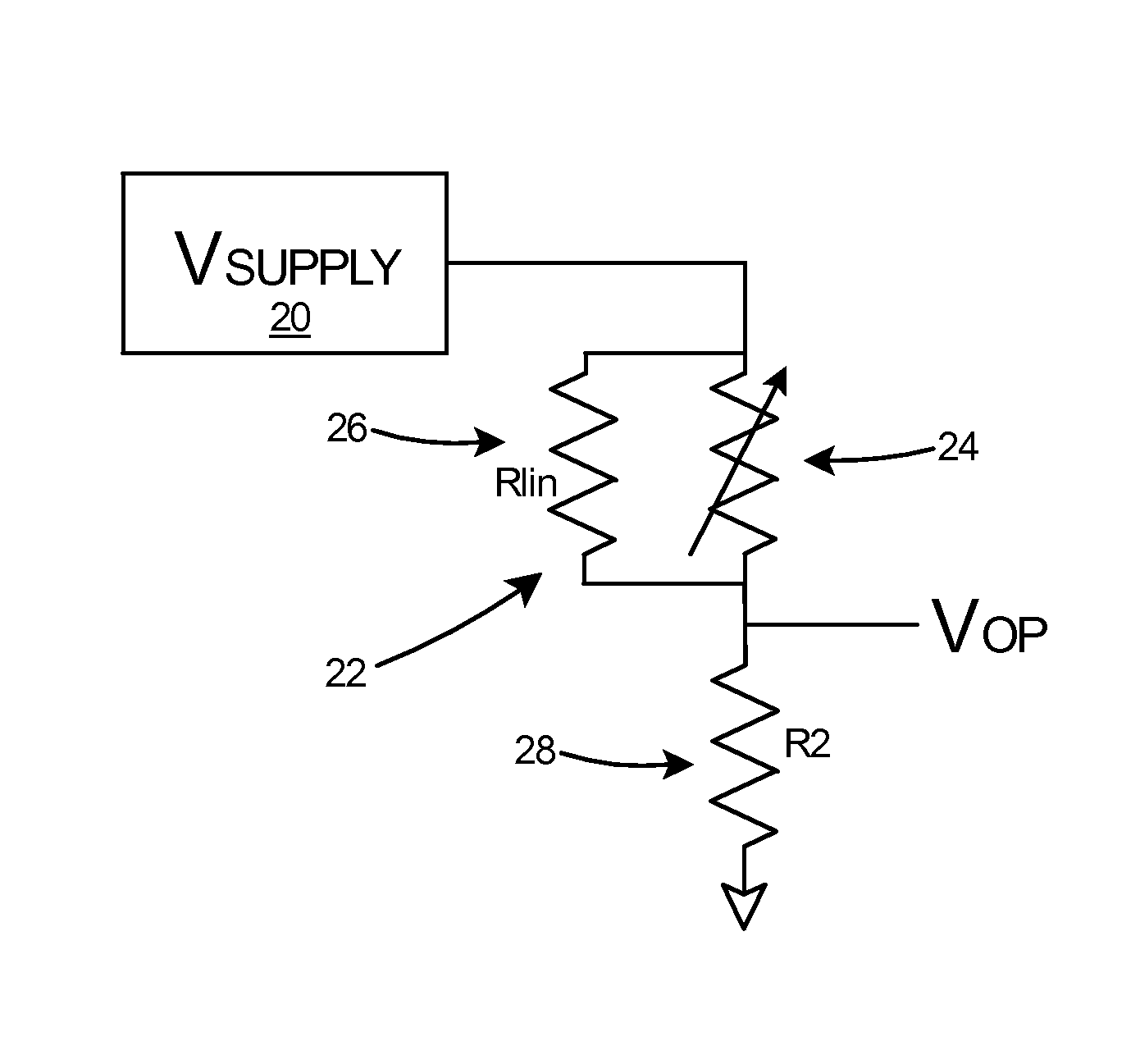Method for passively compensating for temperature coefficient of gain in silicon photomultipliers and similar devices
a technology of temperature coefficient and gain, which is applied in the direction of radiation controlled devices, optical radiation measurement, instruments, etc., can solve the problems of inability to achieve other approaches to temperature sensitive bias control circuitry, and inability to provide independent bias supplies for every device, etc., to achieve excellent energy and timing resolution, facilitate offline testing, and low detection threshold
- Summary
- Abstract
- Description
- Claims
- Application Information
AI Technical Summary
Benefits of technology
Problems solved by technology
Method used
Image
Examples
Embodiment Construction
[0020]With reference to the “two resistor” voltage divider bias network in FIG. 1, which depicts a first embodiment according to the present invention, the two resistor voltage divider includes a voltage supply 20, a linearized thermistor 22 consisting of a thermistor 24 in parallel with a linearizing resistor 26, and a divider resistor 28. To realize appropriate temperature compensation the divider resistor 28, linearized thermistor 22 and bias supply 20 must satisfy two relationships:
(1) VOP at Operating Temperature T
[0021]VOP=R2[VSUPPLY-ILEAK[RLinRT0ⅇB0(1T-1T0)RLin+RT0ⅇB0(1T-1T0)]]R2+RLinRT0ⅇB0(1T-1T0)RLin+RT0ⅇB0(1T-1T0)
and
(2) Temperature Coefficient of Voltage (TCV) of the Linearized Thermistor Evaluated at Operating Temperature T
[0022]TCV=B0RT02RLinⅇ2B0(1T-1T0)T2[RLin+RT0ⅇB0(1T-1T0)]2-B0RT0RLinⅇB0(1T-1T0)T2[RLin+RT0ⅇB0(1T-1T0)]
Where
TCV=Temperature Coefficient of Voltage (V / K)
T=Temperature for circuit operation (K)
VSUPPLY=Bias supply voltage (V)
ILeak=...
PUM
 Login to View More
Login to View More Abstract
Description
Claims
Application Information
 Login to View More
Login to View More - R&D
- Intellectual Property
- Life Sciences
- Materials
- Tech Scout
- Unparalleled Data Quality
- Higher Quality Content
- 60% Fewer Hallucinations
Browse by: Latest US Patents, China's latest patents, Technical Efficacy Thesaurus, Application Domain, Technology Topic, Popular Technical Reports.
© 2025 PatSnap. All rights reserved.Legal|Privacy policy|Modern Slavery Act Transparency Statement|Sitemap|About US| Contact US: help@patsnap.com



